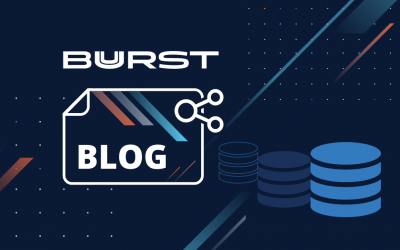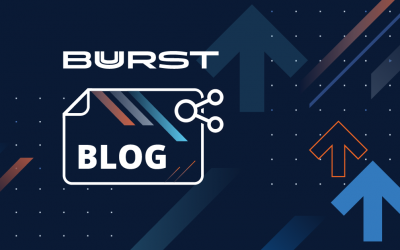Cloud Infrastructure Helps You Stay Competitive!
We’ve become so accustomed to locking in certain functionality when we buy hardware devices that it’s now something we expect to upgrade in the future. Think about your smartphone, your desktops, your cars, and all of your data center equipment. Even if what you have is still working, but it’s not as great anymore, we either live with it or justify how to upgrade our older, inefficient productivity tools and infrastructure to get the latest capabilities.
The speed of innovation in data center infrastructure is a perfect example. There are always new functional capabilities appearing. New processor speeds, bigger and faster disks or flash media, higher speed networks… and they may even be less expensive! Buying a new car because it’s got new gadgets might sound like a great thing, but it’s not pragmatically affordable when what you own is working. We see the very same things happen when new data center options appear. They’re the “latest thing” until the next latest thing comes along. You can never affordably keep up, right?

Well, maybe there’s a better alternative. The modern flexibility of public cloud platforms offers customers instant access to a wide variety of computing, storage, and networking ingredients that form almost infinite combinations. The difference is you don’t have to buy all of the combinations, and you get to pick what’s best for your business. This flexibility isn’t a static decision that you’re stuck with at the time of purchase, like computer hardware, it’s malleable throughout the lifecycle of your project, and throughout the lifecycle of your business.
Have you ever made an architectural error in designing a data center or rolling out a new application? Have you ever received a data storage capacity forecast that was accurate as you looked forward to the next three to five years? Did your performance requirements change after you made your last infrastructure purchase? These may be rhetorical questions (or you’ve been extremely fortunate). If this resonates with past frustrations or you have suffered through budget consequences by over or under-buying, then you’re not alone.
Enter the Cloud Era
The inventory of options now available from public cloud platform vendors provides an incredible opportunity to dial in just what you need. If you need more processing power, then picking an instance (cloud terminology for your server) with the right combination of cores, memory, networking, and the local ephemeral cache is a click away. There is a similar variety of choices for your storage requirements. It ranges from ultra-high performance all-flash for latency-sensitive workloads, to inexpensive capacity-oriented storage options that hold your secondary or tertiary tier data, OR you can mix them for the right combination of any tier. Where in the physical appliance world can you get all of that flexibility?
It doesn’t end at the initial options you picked. What about the changes mentioned earlier? You start a project with one set of needs and then you must adjust based on reality. A perfect example is going from a proof of concept or pilot instance into actual production. Or how about when your company is growing exponentially or your customer base increases beyond forecast? All may be hard to predict, but public cloud options afford you the ability to adjust at any time. Fearful of getting your deployment architecture wrong? It’s understandable, as you may put your company or yourself at risk, but a malleable cloud architecture is one that permits adjustment over time.
At SoftNAS, we provide software-based options for NAS and SAN storage with all of the advanced data services you’d expect from a mature on-premises hardware company. The protocols your applications use today allow you to make use of the cloud computing, network and storage options without changing the applications. Because we also provide a non-destructive means of changing the compute running our virtual storage appliance, the performance upgrades provided by higher-speed computing, local cache, RAM, and networking are easily changed by moving to a size instance. The same goes for your storage type where we can provide access, concurrently, to any combination of media – flash to inexpensive object-based data stores. All of these combinations accommodate change over time and at any time.
SoftNAS provides unprecedented flexibility that hardware-based on-premises options can’t match:
The Storage Controller
The host of the storage operating system relies on computing power to handle I/O activity, and advanced storage features like deduplication, compression, caching, snapshotting, cloning, replications, high availability protection, tiering storage, encryption, and access controls. The compute instances offered by the cloud computing platforms offer cost and performance flexibility to match the workload. For smaller, less I/O intensive applications, utilizing an instance with fewer cores and a lower speed NIC that uses smaller amounts of RAM or local SSD cache may work just fine… and it saves you money. If your needs change, or if you have a more demanding workload, then using a more robust instance configuration instantly bumps up your performance with more computing and caching power. The bigger instances also come with higher-speed NIC interfaces, which is crucial for I/O demanding workloads. Changing the computing power changes the storage controller characteristics. The benefit of using a software-based storage system in a public cloud is the ability to change the performance profile of the storage controller at anytime.
The Storage Account Type
On-prem storage offerings force you to select the performance based on the type of media it uses and then you’re pretty much stuck with the performance profile and possibly the capacity too. Cloud storage offers much more variety and multiple storage types. SoftNAS utilizes the block and/or object storage accounts as a storage pool much like traditional storage systems use disk drives or flash drives. SoftNAS leverages these combinations to provide flexible cost and performance storage solutions that are often difficult or impossible to obtain using conventional on-premises options. We do this by allowing multiple concurrent capacities sourced from the various storage account types offered on Azure and AWS. The flexibility provides excellent cost, performance, and capacity options that infinitely adjust as needed. The ability to use and adjust your current requirements in any combination of protocols, capacity, and performance level, provides the ability to add on or change using these options as your needs change.

Advanced Storage Features, too!
You don’t have to leave the enterprise functionality that you expect when you move to the cloud.
One last point… when you want to leverage the latest technology, public cloud platforms make your life so much easier. Vendors continually make evolutionary investments to provide the latest in datacenter solutions. The competitive nature of the public cloud infrastructure space affords you the best options because it is ever-evolving with the latest advancements in technology. This is the case because cloud platform vendors compete to earn and retain your business. If there’s a new processor available… a new network speed… a lower cost per terabyte… you’ll always benefit from their never-ending upgrade cycle. Adding software from companies like SoftNAS, you get the added flexibility to make changes as needed.
So, the next time you feel underwhelmed by your hardware infrastructure, consider the options SoftNAS and our public cloud partners offer for more flexibility. It won’t take long to realize the old way isn’t workable in today’s dynamic business environments where things keep changing and the data footprint keeps growing.
Examples of Ideal Uses Cases
The use cases for software-based virtual storage appliances hosted on public cloud platforms span many segments. For unstructured data with ever-increasing file sizes, examples of ideal uses include:
- Back-up, DR, and Archive
- Moving your business or SaaS applications
- User file sharing
- Storage consolidation
- Video/media storage
- Source code repository
- Medical records
- Legal documents
- Energy Industry data
- Big Data
- Genomics
Next Steps
Learn more about cloud-based enterprise architecture options at Buurst. We have years of experience helping customers make this transition quickly and easily. We understand you may have questions and we’d be pleased to help you make a successful transition to the cloud. SoftNAS is used by thousands of organizations around the world to protect their data in the cloud, achieve a 100% up-time SLA for business-critical applications, and move applications, data and workloads into the cloud with confidence.
You can get started with SoftNAS on Azure or AWS in multiple ways:
- Take a Free Azure Test Drive: Get started in under two minutes using the Azure Test Drive. This option allows you to quickly try SoftNAS without having to install or configure anything. The SoftNAS instance loads automatically connect the Azure storage account and pre-provisions multiple storage volumes/LUN using NFS, CIFS/SMB, and iSCSI. No Credit card or Azure Subscription is required but the environment is available for 1 hour from the time you enter the test drive.
- Try out SoftNAS for free on Azure.
- Try out SoftNAS for free on AWS.
Both trials allow you to install, configure and use SoftNAS as if you were running in a production environment and explore the product for multiple weeks.
- Purchase: You can purchase SoftNAS on the Azure or AWS Marketplaces. We offer various capacities and performance levels for fast time to production. Discounted larger deployments up to many petabytes, are available via a BYOL (Bring Your Own License) obtained by contacting the SoftNAS Sales team or an authorized reselling partner.
ABOUT THE AUTHOR
Michael Richtberg is the VP of Strategic Alliances and Corporate Development for SoftNAS, Inc. His experience spans 30+ years of computer science transformation. He has been involved in leading business initiatives via leadership roles in technology strategy, marketing and product management with brand leaders like Oracle, Dell, Citrix, NCR and start-ups in the disruptive virtual storage and hyper-converged space via GreenBytes, Pivot3 and now SoftNAS, the #1 best-selling NAS in the cloud.







